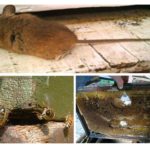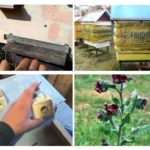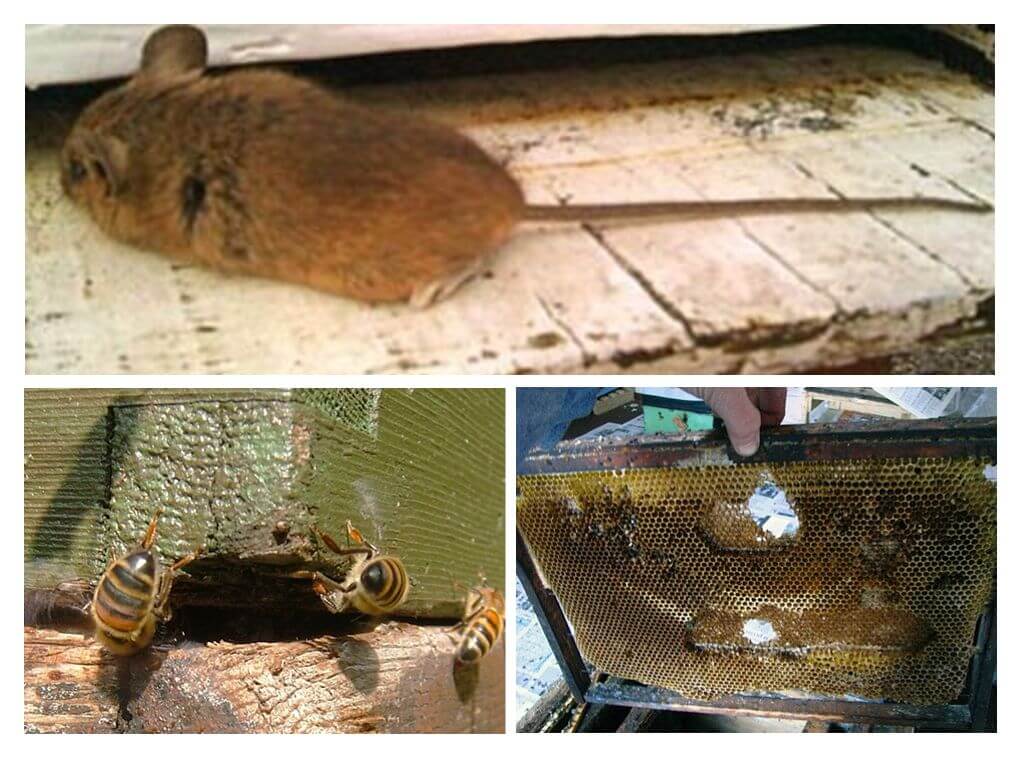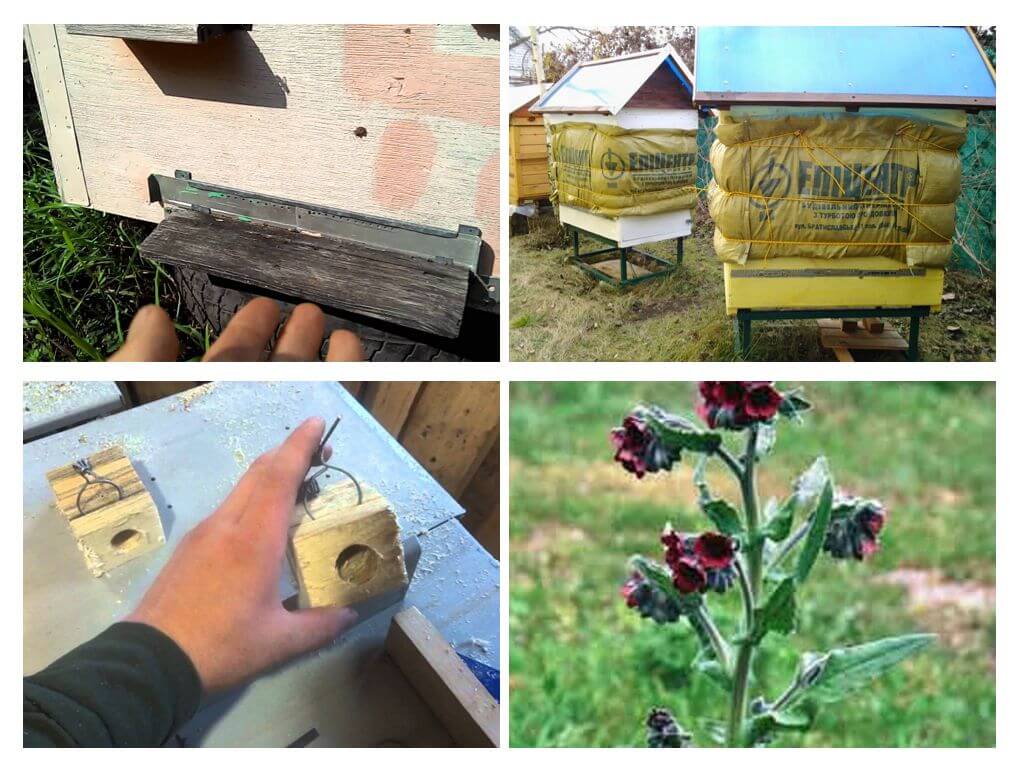How to drive a mouse out of the hive in winter and summer
Content
- Hive mice
- Protecting the hive against mice
All rodents, and mice among them, pose some danger to the bees and their housing. They are able to wade into the hives at any time of the year, but in the summer the bees expel them, but in the winter, when they sleep with their entire families, the mice are capable of causing considerable damage to the hives themselves and pose a threat to the life of the bees. There are many ways to deal with mice in the apiary to prevent the death of insects.
What harm can mice cause bees?
During the winter season, rodents penetrate hives to comfortably sleep and are able to cause a lot of trouble:
- They eat stocks of food harvested by bees for the winter and early spring, sometimes they also eat the bees themselves.
- Mice gnaw through the holes in the comb, which later become unsuitable.
- Pests leave behind a mouse smell that the bees do not like, which is why they will not want to use hives for honey and reproduction of queens afterwards.
- Having settled down with comfort in a warm hive, rodents make nests, bring out babies, creating a constant noise that worries bees. Insects start to get nervous and have their reserves in large quantities, they have disturbed digestion, diarrhea, which is often the cause of their death.
Therefore, the main task of beekeepers is to prevent mice from entering the hive and protect the bees from the entry of pests into their home.
Pest control in the apiary
Many experienced beekeepers begin the fight against mice in the apiary before the onset of cold weather. To do this, several basic methods are used so that pests do not start in the house or help remove a mouse from the hive, destroying it:
- protection of the hives themselves from the penetration of rodents;
- mechanical methods (mousetraps, traps, etc.);
- chemicals.
Preparing hives for winter
Mice often climb into hives through cracks in the walls, on the bottom, on the roof. To protect the hives from mice, it is important to make houses for bees qualitatively, so that all the details are located close to each other. All sorts of ways and holes through which rodents can crawl through, should be carefully patched. To protect against the penetration of mice into the hive, special gratings or metal nets are put on them, the bottom of the hive and the bottom of the doors are upholstered with iron sheets up to 30-40 cm in height. It is better to put a metal fence or a grid on the tap holes, through which cells only bees can crawl through.
It is recommended to make the floor in the soto-storage facilities concrete, all the houses in front of the cold should be repaired, it is better to store cells in rooms where the mice cannot penetrate. All found holes must be sealed with a mixture of clay and broken glass.
Mechanical methods of struggle
If, however, the mouse has climbed into the hive, then it should be removed as quickly as possible, until it scared the bees. The most reliable in this situation are mechanical methods, i.e. installation of mousetrapstraps with baits.Ready-made mousetraps can be bought in the store, but traps can be made independently from improvised means.
Examples homemade trapsthat can be put for mice in or near the hive:
- From a milk bottle with a rather wide neck, where you need to pour a little vegetable oil, also coat it with oil on the neck and place it, leaning against the wall next to the hive. Lured by the smell of oil, the mouse will slip into a bottle from which it can no longer escape;
- An old trap consisting of a barrel, on the bottom of which a brick is placed on a narrow rib. The barrel is filled with water to the edge of the brick, covered with a cardboard with a slit, in which the cardboard fragments are tilted down, and the bait is attached here. On the board attached to the barrel, the mice climb up, trying to get the bait, fall into the water through the hole, and then get out onto the brick. Having heard the noise, the next mouse follows the same path. Rodents in the trap can catch a lot.
Chemical control agents
Each beekeeper has his own answer to the question of what to do if mice are bred in the hives in winter. The most fast-acting chemicals arewhich will help get rid of pests:
- various poisons acting from eating a single dose (zinc phosphide, thallium sulfate, fluoroacetamide, etc.);
- poisons that gradually accumulate in the body of the pest (zoocoumarin, ratindan, fumarin, etc.).
Poisons are usually mixed in 3% concentration with baits, which can be used as dough, grains, lard, pieces of sausage. The poisoned mixture is placed in places where rodents run or live. Only by destroying them, you can protect and protect the bees from mice.
Most popular poisonous lures for miceHaving eaten which rodents die:
- mix equal carbon dioxide and finely chopped lard, spread the mixture on the floor in the storage;
- a mixture of quicklime and sugar is made in the ratio (1: 1.5), 2-3 drops of anise oil are added for the smell;
- any grain is mixed with gypsum, and water is placed next to it: when the mouse eats grain and drinks water, the gypsum inside it will harden in the intestine, which will cause its death.
Features of the manufacture of baits
To expel a mouse from a beehive in the winter it is possible only in one way: to put a bait, having eaten which it will die. The process consists of several stages:
- first mix the poison and the bait, and then add a little attractive product with a smell (vegetable or anise oil, sugar);
- in the manufacture of grain bait start with mixing the grain and vegetable oil or starch paste, and you need to mix so that the grain is covered with a thin oil layer, then add poison for mice.
Plants to protect the apiary from mice
There are several types of plants whose smell is not tolerated by rodents, therefore such grass from mice successfully used to remove and scare off rodents and thus protect the hive:
- Chernokoreny officinalis, grown in the summer, and then in the fall, its roots and stems are harvested to decompose in the winte, well frightening off the unpleasant smell of rodents.
- Around the hives and inside the repositories they lay out the rind and leaves of walnuts, chasing away the rodents;
- Mice do not like the aromas of red elderberry, peppermint, coriander, camomile pharmacy, pine needles - having smelled their smell, they will never climb into the hive.
Using chemical and folk remedies fighting and preventing the settlement of mice in the hives, each owner will be able to successfully protect his apiary and the bees from the invasion of these pests.









